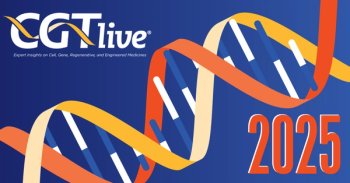
GPRC5D-Targeted CAR T-Cell Therapy Shows Promising Efficacy After BCMA Therapy in R/R MM
New data from a phase 1/2 trial of BMS-986393 were presented at the 64th Annual ASH Meeting.
The chimeric antigen receptor (CAR) T-cell therapy BMS-986393 (CC-95266-MM-001; Bristol Myers Squibb) had a manageable safety profile with promising dose-dependent efficacy in relapsed/refractory multiple myeloma, even after prior BCMA-targeted therapy, according to updated data from a phase 1/2 trial (NCT04674813).
These data were presented at the
“BCMA CAR Ts have had unprecedented results in relapsed/refractory myeloma but unfortunately most patients still relapse so new targets and new therapies are needed. GPRC5Dis an orphan receptor expressed in myeloma cases with low level expression in other tissues such as skin, tongue, and nail beds,” Berdeja said during his presentation.
The phase 1, multicenter, open-label, dose-escalation and expansion study enrolled patients with multiple myeloma relapsed/refractory after a median of 4 prior therapies (range, 3-13) who had progressed within 12 months of last treatment or within any time period after prior CAR T-cell therapy to assess safety and tolerability as well as determine the maximum tolerated dose (MTD) and recommended phase 2 dose of BMS-986393. These patients had a median age of 63 (range, 48-80) and were enrolled in cohorts of 5 dose levels: 25x106, 75x106, 150x106, 300x106,and 450x106 vg/kg (dose levels 1-5, respectively). A high proportion of enrolled patients had high risk cytogenetics (n = 16; 48.5%) of and/or extramedullary plasmacytoma (n = 15, 45.5%). Over half of patients had any prior BCMA therapy (n = 18, 54.5%) and 39.4% (n = 13) had prior BCMA-targeted CAR T-cell therapy.
READ MORE:
Investigators found that 87.9% (n = 29) of patients had treatment-emergent adverse events (AEs), 72.7% (n = 24) were grade 3/4 treatment-emergent AEs, and 72.7% (n = 24) had treatment-related AEs, with 57.6% (n = 19) of these being grade 3/4. Dose-limiting toxicities of prolonged grade 4 neutropenia were identified in 2 participants treated in the 25x106 and 75x106 dose levels but the MTD has not been exceeded. No deaths occurred related to study treatment, with 1 death occurring prior to treatment.
Common AEs included neutropenia (any grade, 66.7%; grade 3/4, 60.6%), thrombocytopenia (any grade, 39.4%; grade 3/4, 21.2%), and cytokine release syndrome (CRS; any grade, 63.6%; grade 3/4, 6.1%). The median time-to-onset of CRS was 3 days with a mean duration of 4 days. CRS incidence and severity were similar at all dose levels after the lowest. Two cases of low-grade immune effector cell-associated neurotoxicity syndrome (ICANS) were observed but these were infrequent and reversible and no cerebellar toxicity was observed. Furthermore, on-target, off-tumor AEs affected skin (n = 10; 30.3%), dysgeusia (n = 5; 15.2%), nails (n = 3; 9.1%), and dysphagia (n = 1; 3.0%) but were all grade 1 with most (78.6%) not requiring treatment.
Responses were seen at all dose levels with an overall response rate (ORR) of 89.5% and complete response (CR) rate of 47.4% in 19 patients evaluable for efficacy analysis. The first dose level had the longest follow-up with 12.3 months (range, 8.2-15.5) for an ORR of 80.0% and a CR rate of 80.0%, the second cohort had a median follow-up of 5.9 months (range, 3.1-8.9) for an ORR of 87.5% and a CR rate of 37.5%, the third had a median follow-up of 4.1 months (range, 1.0-4.5) for an ORR of 100.0% and a CR rate of 50.0%, and the fourth had a median follow-up of 2.1 months (range, 2.1-2.1) for an ORR of 89.5% and a CR rate of 47.4%.
Looking specifically at patients who received prior-BCMA therapy, this population had an ORR of 77.8% and a CR rate of 44.4%, compared to a 100% ORR and 50% CR rate in those who did not have prior BCMA therapy. Prior BCMA therapies included approved CAR T-cell therapy (n = 2; 10.5%), investigational CAR T-cell therapy (n = 5; 26.3%), belantamab mafodotin (n = 1; 5.3%), and T-cell engagers (n = 1; 5.3%).
Participants overall had a median follow-up of 3.1 months (range, 0.1-15.5) and 15 of 17 patients with at least a partial response have an ongoing response. All 4 patients that had a CR for which minimal residual disease (MRD) data were available were MRD-negative at 3 months post-treatment.
Bardeja and colleagues used soluble BCMA as a marker of tumor burden reduction and found a quick reduction of this biomarker to below normal donor concentrations. Pharmacokinetics revealed fast expansion and multi-phasic decline following infusion with evidence of dose-dependent increases in cellular expansion up to the 150x106 cell dose but pharmacokinetics varied largely between individuals with overlapping exposure observed at higher dose levels.
“These preliminary data support GPRC5D-directed CAR T-cell therapy with BMS-986393 as a new treatment in relapsed/refractory multiple myeloma, irrespective of prior BCMA-directed therapy and the expansion in the part B is underway to define the RP2D,” Berdeja concluded his presentation.
REFERENCE
Clinical Activity of BMS-986393 (CC-95266), a G Protein–Coupled Receptor Class C Group 5 Member D (GPRC5D)–Targeted Chimeric Antigen Receptor (CAR) T Cell Therapy, in Patients with Relapsed and/or Refractory (R/R) Multiple Myeloma (MM): First Results from a Phase 1, Multicenter, Open-Label Study. Presented atL 64th ASH Annual Meeting, December 10-12, New Orleans, Louisiana. Presentation #364
Newsletter
Stay at the forefront of cutting-edge science with CGT—your direct line to expert insights, breakthrough data, and real-time coverage of the latest advancements in cell and gene therapy.





































